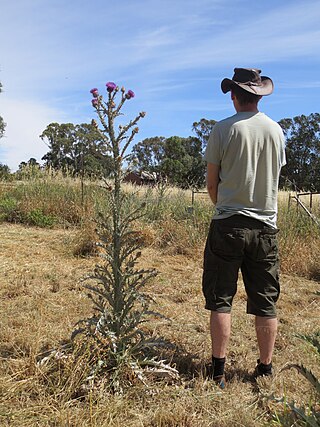Related Research Articles

The national parks of New Zealand are protected natural areas administered by the Department of Conservation (DOC). The first national parks established in the country were all focused on mountain scenery. Since the 1980s the focus has been on developing a more diverse representation of New Zealand landscapes. The parks are all culturally significant and many also contain historic features. Tongariro National Park is one of the World Heritage Sites that are of both cultural and natural significance, while four of the South Island national parks form Te Wahipounamu, another World Heritage Site. There are currently 13 national parks; a 14th, Te Urewera National Park, was disestablished in 2014.

New Zealand is divided into sixteen regions for local government purposes. Eleven are administered by regional councils, and five are administered by unitary authorities, which are territorial authorities that also perform the functions of regional councils. The Chatham Islands Council is not a region but is similar to a unitary authority, authorised under its own legislation.
Taonga or taoka is a Māori-language word that refers to a treasured possession in Māori culture. It lacks a direct translation into English, making its use in the Treaty of Waitangi significant. The current definition differs from the historical one, noted by Hongi Hika as "property procured by the spear" [one could understand this as war booty or defended property] and is now interpreted to mean a wide range of both tangible and intangible possessions, especially items of historical cultural significance.
Archives New Zealand is New Zealand's national archive and the official guardian of its public archives. As the government's recordkeeping authority, it administers the Public Records Act 2005 and promotes good information management throughout government.

Territorial authorities are the second tier of local government in New Zealand, below regional councils. There are 67 territorial authorities: 13 city councils, 53 district councils and the Chatham Islands Council. District councils serve a combination of rural and urban communities, while city councils administer the larger urban areas. Five territorial authorities also perform the functions of a regional council and thus are unitary authorities. The Chatham Islands Council is a sui generis territorial authority that is similar to a unitary authority.
The Reserve Bank of New Zealand (RBNZ) is the central bank of New Zealand. It was established in 1934 and is currently constituted under the Reserve Bank of New Zealand Act 2021. The governor of the Reserve Bank, currently Adrian Orr, is responsible for New Zealand's currency and operating monetary policy.
This is a timeline of environmental history of New Zealand. It includes notable events affecting the natural environment of New Zealand as a result of human activity.

The Resource Management Act (RMA) passed in 1991 in New Zealand is a significant, and at times, controversial Act of Parliament. The RMA promotes the sustainable management of natural and physical resources such as land, air and water. New Zealand's Ministry for the Environment describes the RMA as New Zealand's principal legislation for environmental management.

Protected areas of New Zealand are areas that are in some way protected to preserve their environmental, scientific, scenic, historical, cultural or recreational value. There are about 10,000 protected areas, covering about a third of the country. The method and aims of protection vary according to the importance of the resource and whether it is publicly or privately owned.
Kaitiakitanga is a New Zealand Māori term used for the concept of guardianship, for the sky, the sea, and the land. A kaitiaki is a guardian, and the process and practices of protecting and looking after the environment are referred to as kaitiakitanga.

A noxious weed, harmful weed or injurious weed is a weed that has been designated by an agricultural or other governing authority as a plant that is injurious to agricultural or horticultural crops, natural habitats or ecosystems, or humans or livestock. Most noxious weeds have been introduced into an ecosystem by ignorance, mismanagement, or accident. Some noxious weeds are native. Typically they are plants that grow aggressively, multiply quickly without natural controls, and display adverse effects through contact or ingestion. Noxious weeds are a large problem in many parts of the world, greatly affecting areas of agriculture, forest management, nature reserves, parks and other open space.

North Head is a volcano and Tūpuna Maunga forming a headland at the east end of the Waitematā Harbour in Auckland, New Zealand, in the suburb of Devonport. Known for its sweeping views over the harbour and the Hauraki Gulf, since 1885 the head was mainly used by the military as a coastal defence installation, which left a network of accessible old bunkers and tunnels as its legacy, forming part of the attraction. The site was protected as part of Hauraki Gulf Maritime Park in 1972 and listed as a Category I historic place in 2001. As part of a 2014 Treaty of Waitangi claim settlement the volcanic cone was officially named Maungauika and the reserve unofficially renamed Maungauika / North Head Historic Reserve.

The Conservation Act 1987 is New Zealand's principal act concerning the conservation of indigenous biodiversity. The Act established the Department of Conservation and Fish and Game, and complements the National Parks Act 1980 and the Reserves Act 1977.

The Minister of Conservation is a minister in the New Zealand Government with responsibility for promoting conservation of the natural and historic heritage of New Zealand.

The Ministry for Culture and Heritage is the department of the New Zealand Government responsible for supporting the arts, culture, built heritage, sport and recreation, and broadcasting sectors in New Zealand and advising government on such.

New Zealand has a unitary system of government in which the authority of the central government defines sub-national entities. Local government in New Zealand has only the powers conferred upon it by the New Zealand Parliament. Under the Local Government Act 2002, local authorities are responsible for enabling democratic local decision-making and promoting the social, economic, environmental, and cultural well-being of their communities, as well as more specific functions for which they have delegated authority.

The Reserves Act 1977 is an Act of Parliament passed in New Zealand. It is administered by the Department of Conservation
Te Hapua Marine Reserve is a marine reserve covering an area of 449 hectares of Te Hāpua / Sutherland Sound, in Fiordland on New Zealand's South Island. It was established in 2005 and is administered by the Department of Conservation.
A nature reserve is a type of New Zealand protected area owned by the New Zealand Government and administered by the Department of Conservation to protect natural features.
A scientific reserve is a type of New Zealand protected area owned by the New Zealand Government and administered by the Department of Conservation as an area for scientific research and education.
References
- ↑ "Reserves Act 1977". doc.govt.nz. Department of Conservation.
- 1 2 Reserves Act 1977 s.16
- ↑ "Ngaruawahia's waters - New Zealand Herald". paperspast.natlib.govt.nz. 23 Apr 1923. Retrieved 2019-01-07.
- ↑ "Reserves and other Lands Disposal Act 1939 No 23 (as at 16 December 1987), Public Act 12 Cancelling Orders in Council relating to the Pilot Reserve, and validating and amending Orders in Council relating to the Lighthouse and Signal-station Reserve in the Town of Napier". www.legislation.govt.nz. Retrieved 2019-01-10.
- ↑ "A Guide for Reserve Administering Bodies" (PDF). Department of Conservation. 2 Nov 2016.
- ↑ "Board of Inquiry into the Turitea Wind Farm Proposal" (PDF). September 2011.
- 1 2 "Resource Management Act 1991 No 69 (as at 12 November 2018), Public Act 229 Purposes of esplanade reserves and esplanade strips – New Zealand Legislation". www.legislation.govt.nz. Retrieved 2019-01-10.
- ↑ "Reserves Act Guide" (PDF). Department of Conservation. 2004.
- ↑ "Access along rivers, lakes and the coast". www.walkingaccess.govt.nz. Retrieved 2019-01-12.
- ↑ "Esplanade reserves and esplanade strips". www.environmentguide.org.nz. Retrieved 2019-01-10.